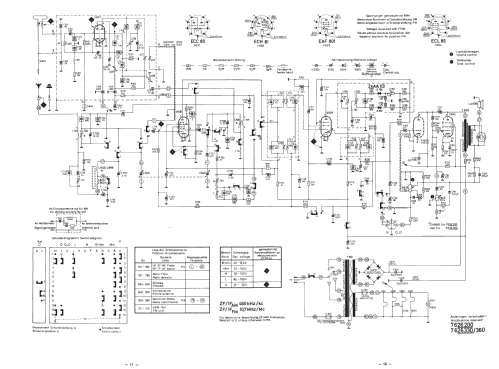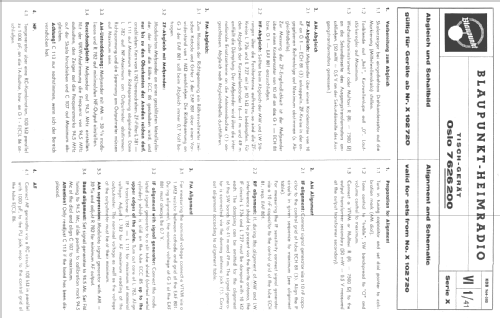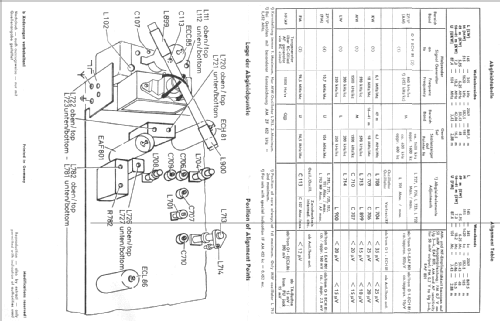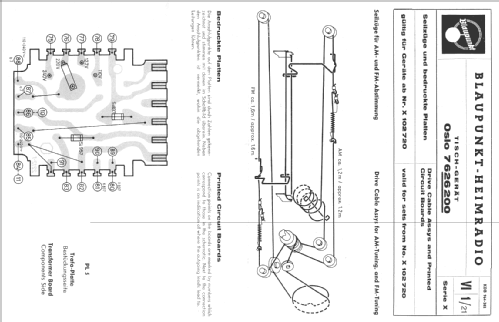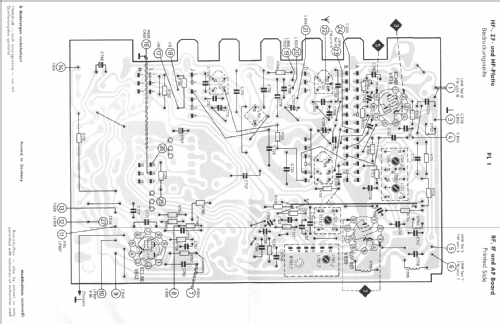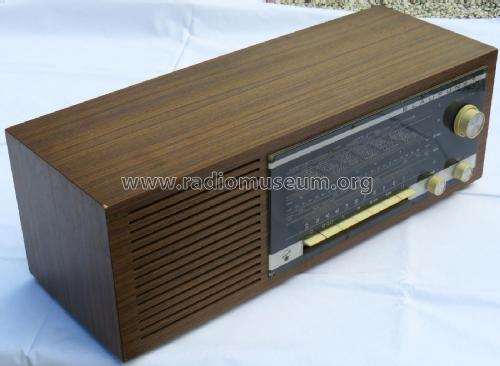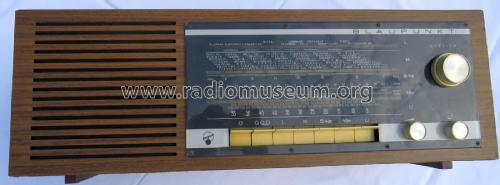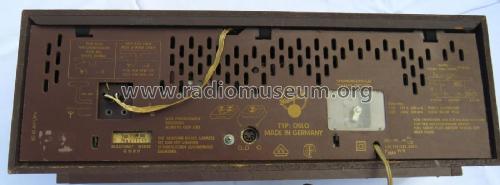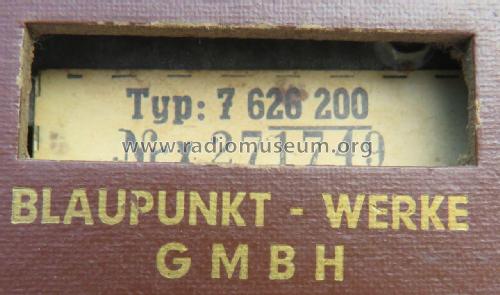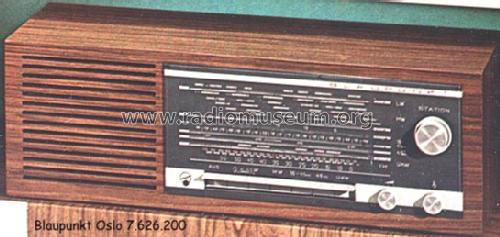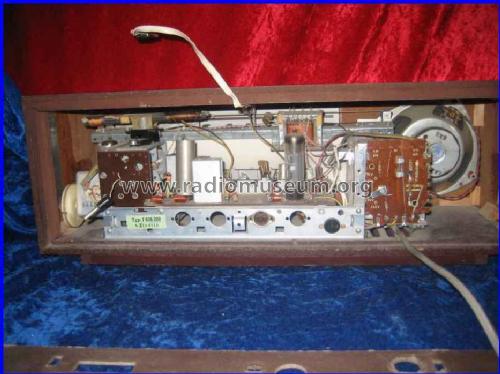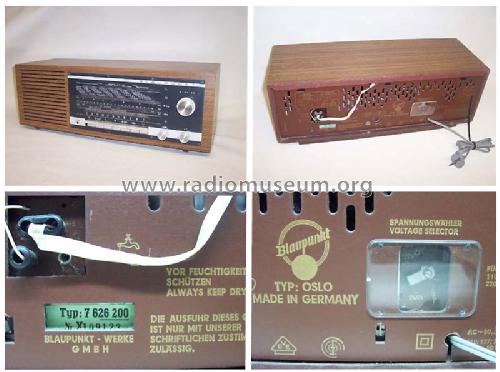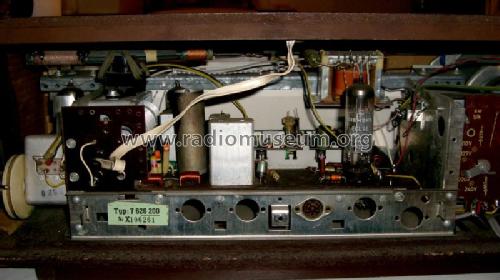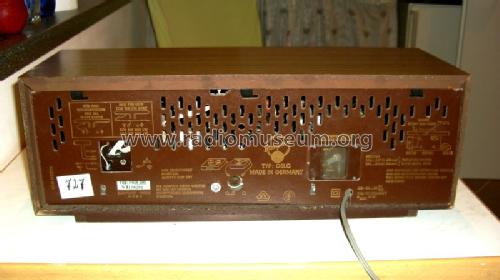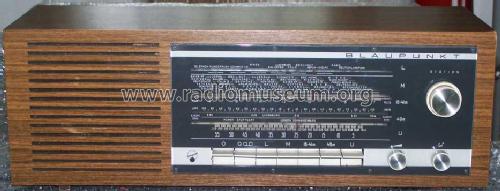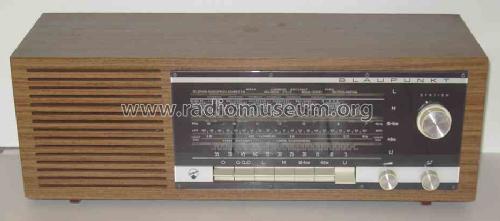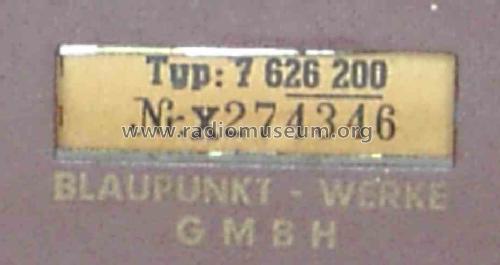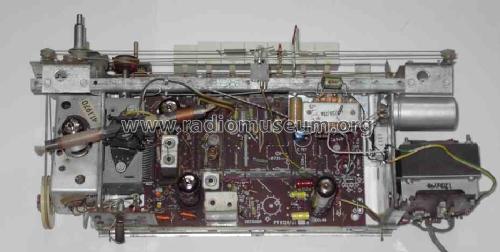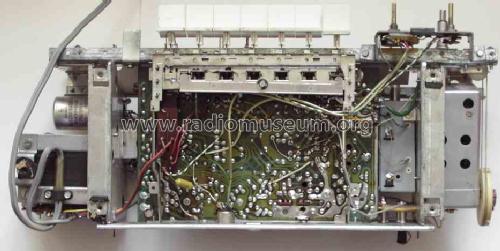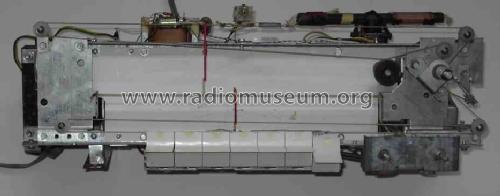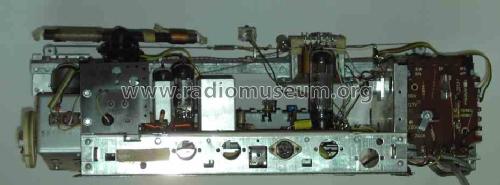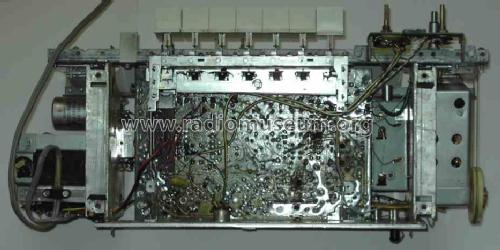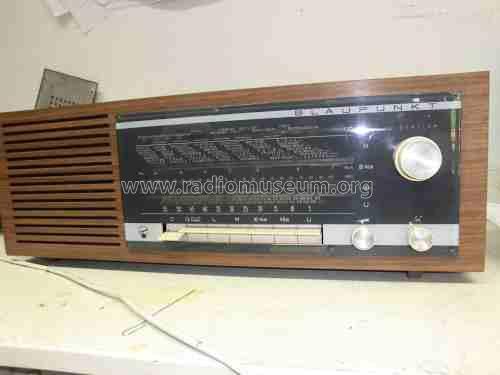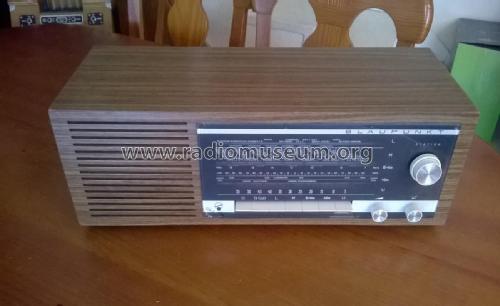Oslo 7.626.200
Blaupunkt (Ideal), Berlin, später Hildesheim
- Country
- Germany
- Manufacturer / Brand
- Blaupunkt (Ideal), Berlin, später Hildesheim
- Year
- 1966–1968
- Category
- Broadcast Receiver - or past WW2 Tuner
- Radiomuseum.org ID
- 26459
-
- alternative name: Ideal-Radiotelephon- und App-fabr. || Ideal-Werke AG; Berlin (ab 1934)
- Brand: Rotstern
Click on the schematic thumbnail to request the schematic as a free document.
- Number of Tubes
- 4
- Main principle
- Superheterodyne (common); ZF/IF 460/10700 kHz
- Tuned circuits
- 6 AM circuit(s) 10 FM circuit(s)
- Wave bands
- Broadcast, (BC) Long Wave (LW), 2 x SW and FM or UHF.
- Power type and voltage
- Alternating Current supply (AC) / 110; 127; 220; 240 Volt
- Loudspeaker
- Permanent Magnet Dynamic (PDyn) Loudspeaker (moving coil) / Ø 13 cm = 5.1 inch
- Power out
- 3 W (unknown quality)
- Material
- Wooden case
- from Radiomuseum.org
- Model: Oslo 7.626.200 - Blaupunkt Ideal, Berlin,
- Shape
- Tablemodel with Push Buttons.
- Dimensions (WHD)
- 520 x 185 x 185 mm / 20.5 x 7.3 x 7.3 inch
- Notes
- Dioden: 2× AA113
- Net weight (2.2 lb = 1 kg)
- 6.4 kg / 14 lb 1.6 oz (14.097 lb)
- External source of data
- erb
- Source of data
- Handbuch VDRG 1966/1967
- Other Models
-
Here you find 3610 models, 3303 with images and 2355 with schematics for wireless sets etc. In French: TSF for Télégraphie sans fil.
All listed radios etc. from Blaupunkt (Ideal), Berlin, später Hildesheim
Collections
The model Oslo is part of the collections of the following members.
Forum contributions about this model: Blaupunkt Ideal,: Oslo 7.626.200
Threads: 1 | Posts: 1
Reparaturbericht:
- Keine Anodenspannung. Gleichrichter durchgebrannt, wird durch 4 x 1N4007 ersetzt, da gerade vorhanden.
- eine Strommessung hinter dem Gleichrichter zeigte zunächst 60 mA auf UKW. Nach 10 Minuten stieg der Strom auf über 100 mA an.Dadurch wurde wohl der Gleichrichter (B250 E100) zerstört.
- nach Entfernen der Endröhre ECL86 blieb der Strom konstant bei 38 mA. Ursache also bei der Endröhre. Koppelkondensator und Gitterableitwiderstand am Pentodensystem in Ordnung.
- ECL86 wieder eingesetzt. Spannung an der Kathode der ECL86 stieg langsam von 6,8 V auf 9 V
Offensichtlich ein Fall von Gitteremission der hierfür anfälligen ECL86. Nach Tausch der Röhre war der Fehler beseitigt.
Gruss, O.R.
Ottmar Rollmann, 22.Mar.12


